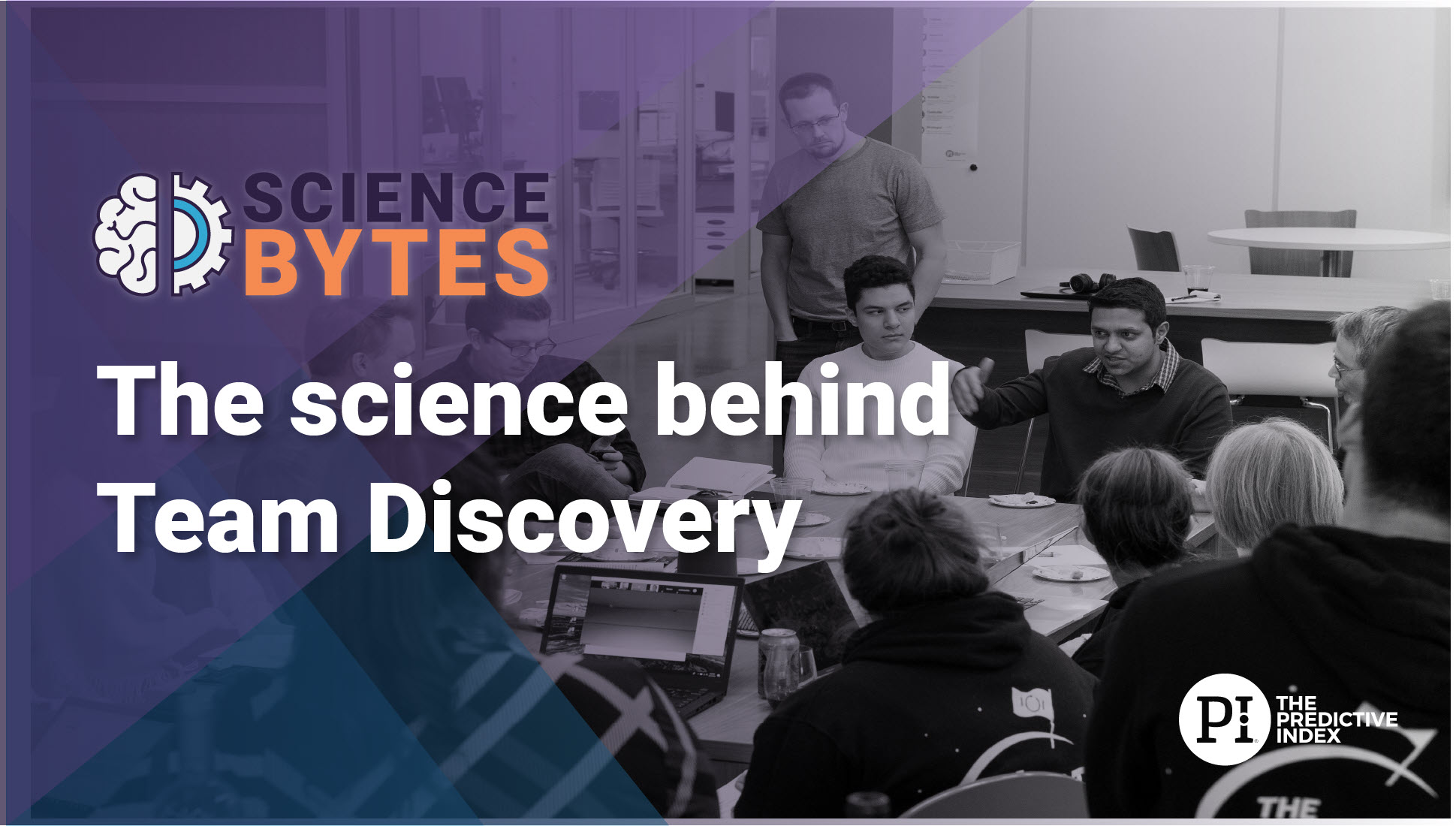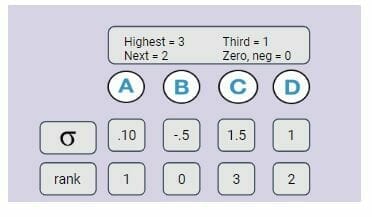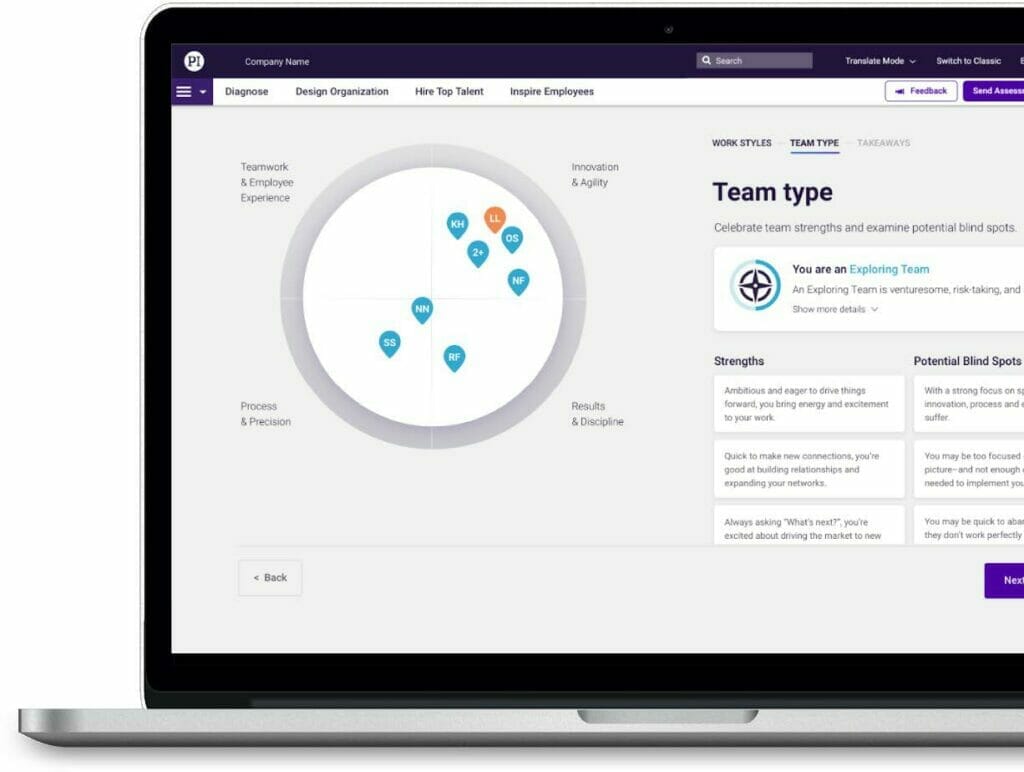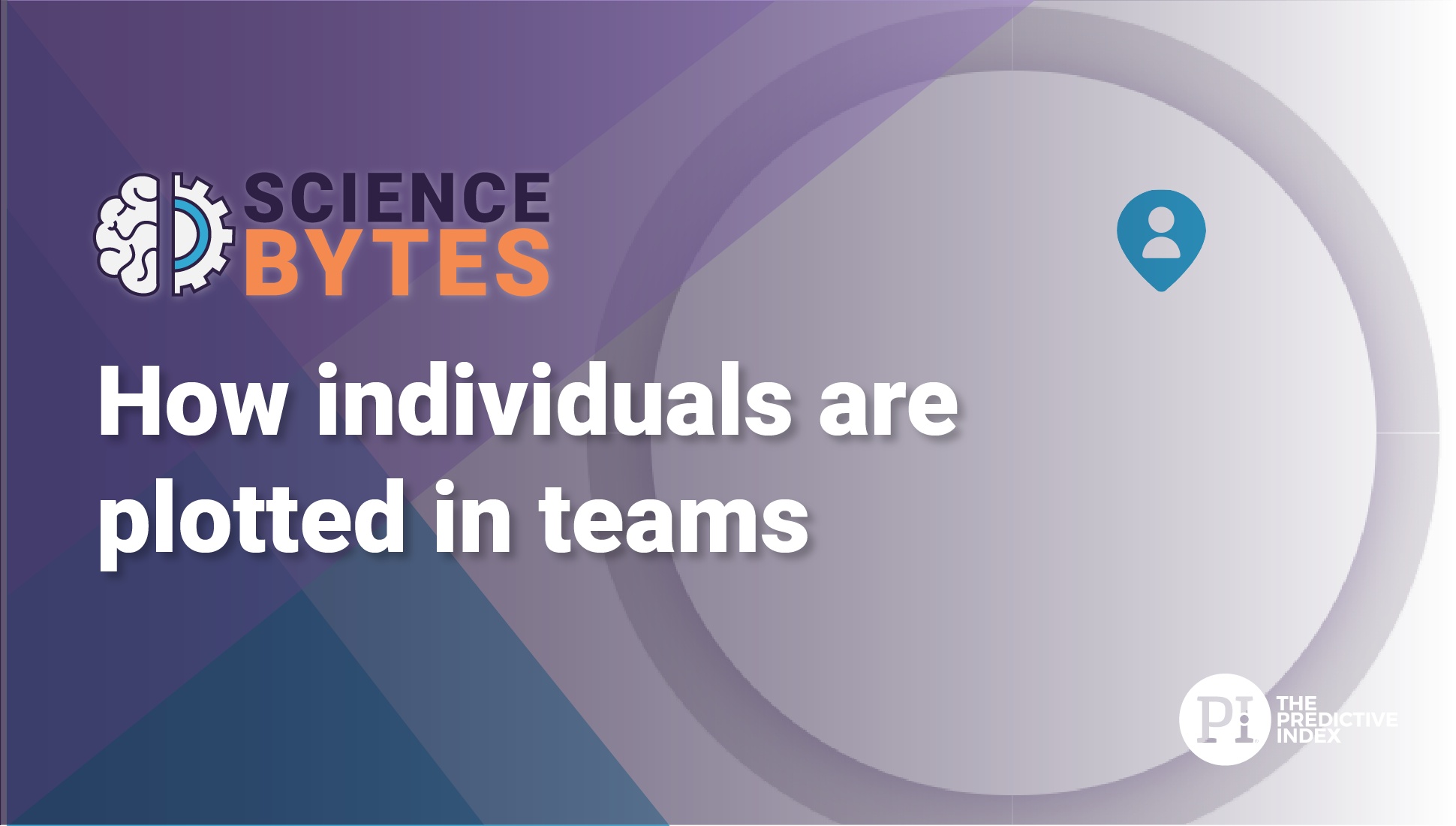The Science Behind Team Discovery
What are the origins of Team Types?
In 2019, The Predictive Index sought to discover the types of teams that existed among client organizations through a large-scale empirical study. Using PI Behavioral Assessment results from 125,000+ employees across 20,000+ teams, we found evidence for nine distinct Team Types based on the behavioral make-up of their members.

The characteristics of these teams are based upon the pioneering work of William Marston (1928) and his model of workplace personality and behavior, which form the foundation for the four primary factors of the PI Behavioral Assessment. The BA is a psychometrically sound and valid tool for personnel selection and development that describes individual behavior in the workplace context.

How do Team Types work?
A team’s type is based upon the overall behavioral emphasis of its members. First, the specific behavioral pattern of each team member is considered. Factors receive rank scores based upon their value (see right visual). These ranks are summed into individual quadrant scores based upon Cameron & Quinn’s interpretation of the Competing Values Framework (2006), a popular framework for understanding organizational culture. These scores are then considered in aggregate, with Team Type determined by the overall emphasis of the team; those quadrants with at least 30% behavioral alignment across the team are considered to be the most descriptive of the team’s culture.


How are individuals plotted across quadrants?
To determine team member plot points, each team member’s A:C and B:D Factor Combinations are converted into percentile ranks, representing how high or low the Factor Combination value is with respect to all other values. For example, an A:C value of 0.6 is in the 59th percentile, so 59% of all possible A:C values are at or are lower than 0.6. This allows us to see where team members lie with respect to Team Type, and can help to identify both individual and team-level strengths and blind spots. A:C percentile ranks are plotted on the horizontal axis and B:D percentile ranks are plotted on the vertical axis.


What are the origins of team strategic emphasis?
PI’s strategic and team objectives are based upon Quinn & Rohrbaugh’s Competing Values Framework (1983), a popular tool for describing organizational effectiveness and culture. In developing these objectives, PI’s Science team conducted an extensive literature review and test development process to ensure that the objectives were sound, representative of their theorized quadrants, empirically related to the four primary factors of the PI Behavioral Assessment, and valid in defining strategic direction. This process involved subject matter experts from numerous organizations and experience levels, as well as a number of field tests and pilots, before launching the final list of objectives and scoring methodology. The development is further detailed in the PI Strategy Assessment Technical Manual.
How does team strategic emphasis work?
First, the team’s leader selects a subset of the 20 team objectives in the PI software. These selections produce team quadrant scores. Scores are based on the percentage distribution of alignment across the four quadrants. These percentages are then converted into 0-3 emphasis scores. Quadrants with at least 30% alignment receive a score of 3.
Strategic pursuit is visualized through a series of 0 to 5 purple arcs surrounding each Team Discovery quadrant; the more arcs associated with a quadrant, the higher that quadrant’s strategic emphasis with regard to the team’s objectives.
How does it all come together?
While Team Type tells us about a team’s culture, values, and natural proclivities, strategic emphasis tells us about the team’s goals and objectives. The combination of Team Types and strategic emphasis can answer questions such as:
- How can we leverage our team’s natural strengths?
- Where are our gaps when it comes to achieving our objectives?
- What does each team member bring to the table with respect to these strengths and gaps?
The PI Team Discovery tool uses both theoretical and empirical scientific findings to produce insights and recommendation actions you can use to optimize your team’s cohesion and performance.
Would you like help from our team to facilitate a Team Discovery session and help build an action plan? Reach out to your PI Certified Partner or consultant.